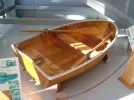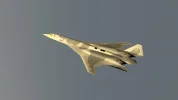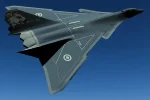Lue se linkkaamani sivu loppuun asti (se ADHD).
Enpä usko että esittämääsi jantterin tauluun metsästyskiväärin luoti pysähtyy. Se sujahtaa läpi, laite rekisteröi tärähdyksen ja raportoi osuman. Siinä lukee
Mikä on itsensä kanssa ristiriidassa koska jos luoti todella pysähtyisi tauluun se luonnollisesti kohdistaa kaiken iskuenergiansa tauluun eikä vain suurta määrää. Mitä todennäköisimmin kirjoittaja halusi sanoa että filmivaneritaulu hidastaa luotia tehokkaasti jolloin iso osa luodin lentoenergiasta kohdistuu tauluun iskuksi ja tärähdysanturi rekisteröi sen helposti.
Aivan ja koska tuuman paksuinen lauta pysäyttää heikon luodin voidaan olla varma, että vaneria kestävämpi duramold tuuman paksuisena pysäyttää varmasti luodin.
Filmivaneri näyttää olevan tasan 700 kg/m3 joten duramold lienee 800-900 kg/m3.
Pelkkä koivuvaneri 660 kg/m3; http://www.puuinfo.fi/sites/default...uunnitteluohjeet/ymparistoselosteet/ys034.pdf
http://www.envor.fi/envor_recycling/fr-rautakauppa/vanerit/
Duramold on kehitetty alun perin potkureihin;
Since our prop is going to be operating well below the critical tip-speed of 880 feet per second we can use one of the traditional airfoils such as the Clark-Y, a very good choice for a wooden prop, thanks to its flat bottom and good thickness ratio, which is about 12%. (The Clark-Y, which was used on Lindbergh's 'NYP' and the USA-B, (US Army, version B) which was used on the Piper 'Cub', owe their existence to Col. Virginus E. Clark, one of America's first truly competent aerodynamicists. Colonel Clark (U.S. Army) was a real genius. His research in molded propellers lead to the invention of the 'Duramold' process for producing laminated wooden skins that had significant advantages over riveted metal structures. The Duramold process is what made the HK-1 possible. [HK-1 or 'Hughes-Kaiser #1' more commonly known as the 'Hercules' or 'The Spruce Goose,' even though most of the structure is Duramolded birch rather than spruce.])
http://bobhooversblog.blogspot.fi/2009_02_24_archive.html
Viimeksi muokattu:





